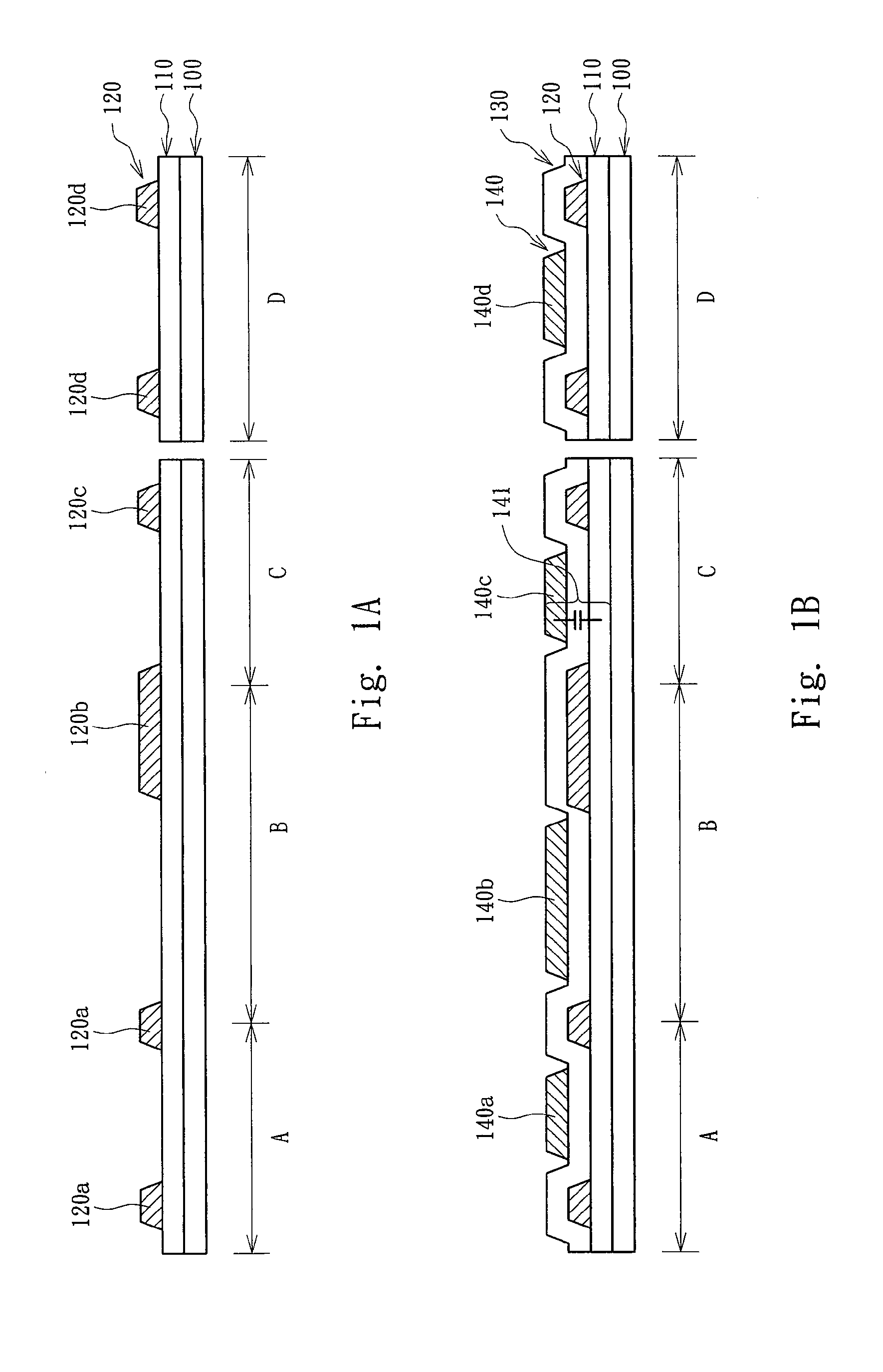Method of Manufacturing an Array Substrate of a Transflective Liquid Crystal Display
a liquid crystal display and array substrate technology, applied in the direction of electrical equipment, semiconductor devices, instruments, etc., can solve the problems of the highest production cost of the lithography process, achieve the effect of reducing the number of photo-masks needed, increasing the capacitance value per unit of area, and reducing the number of photo-masks
- Summary
- Abstract
- Description
- Claims
- Application Information
AI Technical Summary
Benefits of technology
Problems solved by technology
Method used
Image
Examples
first embodiment
[0016]FIGS. 1A-1G are cross-section views of an array substrate of a transflective LCD in process steps according to the first embodiment of the present invention. In FIG. 1A, regions from left to right are a thin film transistor (TFT) region A, a pixel region B, a storage capacitance region C and a gate pad region D, respectively. First, a transparent conductive layer 110 and a fist metal layer 120 are formed sequentially on a substrate 100. Then, a first half-tone photo-mask is used to define the first metal layer 120 and the transparent conductive layer 110 simultaneously. The first metal layer 120 is defined to form complementary patterns 120a, 120c and 120d and a reflective layer 120b, which is on a penetrating portion of the pixel region B. The complementary patterns 120a, 120c and 120d are the complementary patterns of a gate electrode, a capacitance line and a gate pad, respectively. A complementary pattern of a scan line is also formed in the first metal layer 120 but not s...
second embodiment
[0024]FIGS. 2A-2D are cross-section views of an array substrate of a transflective LCD in process steps according to the second embodiment. From the process step of forming the transparent conductive layer 110 to the process step of forming the dielectric layer 150, the second embodiment is the same as the first embodiment. Therefore, the description about these process steps can be directly referred to the first embodiment.
[0025]In FIG. 2A, a second photo-mask is used to define the dielectric layer 150, the second metal layer 140 and the first passivation layer 130 after forming the dielectric layer 150. In this process step, the sacrifice metal layer 140b on the penetrating portion of the pixel region B and the dielectric layer 150 thereon are removed, at the same time, the dielectric layer 150 and the first passivation layer 130 on a side of the first storage capacitance 141 is removed to form a contact window 151. Moreover, the dielectric layer 150 and the first passivation laye...
PUM
 Login to View More
Login to View More Abstract
Description
Claims
Application Information
 Login to View More
Login to View More - R&D
- Intellectual Property
- Life Sciences
- Materials
- Tech Scout
- Unparalleled Data Quality
- Higher Quality Content
- 60% Fewer Hallucinations
Browse by: Latest US Patents, China's latest patents, Technical Efficacy Thesaurus, Application Domain, Technology Topic, Popular Technical Reports.
© 2025 PatSnap. All rights reserved.Legal|Privacy policy|Modern Slavery Act Transparency Statement|Sitemap|About US| Contact US: help@patsnap.com



